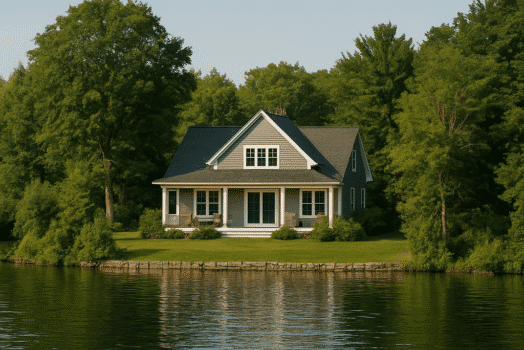Importance of Roof Maintenance
Maintaining your roof protects your home from weather damage and keeps repair costs low. Regular maintenance ensures that minor issues do not become significant problems, saving you time and money in the long run. Engaging with a professional roofer can help identify and address potential problems early.
In addition to extending the life of your roof, routine upkeep can also improve your property’s overall aesthetic appeal. A well-maintained roof speaks volumes about a homeowner’s care with their property, which is critical if you plan to sell. On the other hand, failing to maintain your roof can have serious implications, including water damage, mold growth, and reduced structural integrity. A compromised roof can allow moisture into your home, causing damage to your insulation, electrical systems, and even the foundation over time.
Seasonal Roof Checks
Conducting seasonal roof inspections helps identify potential problems early. A thorough check can reveal issues like loose shingles or clogged gutters during spring and fall. An expert roofer reiterated that routine checks are preventive measures against severe weather conditions. A simple inspection involves looking for visible damage and debris buildup and ensuring water flows freely through the gutters.
Winter snows and summer storms can wreak havoc on your roof. After a harsh winter, look for ice dams or shingles lifted by melting and refreezing cycles. Likewise, summer storms can dislodge shingles and cause structural damage. The key is to be proactive rather than reactive. By scheduling these checks at the beginning and end of the most severe weather seasons, you can catch small problems before they become more significant and expensive.
Identifying Common Roof Problems
Common roof issues include leaks, damaged shingles, and poor insulation. Homeowners should be alert to signs such as water stains on ceilings, missing shingles, and mold growth. Proper identification of these problems can help in early intervention and repair. Loose or curling shingles, for instance, can often be a precursor to more significant water damage if not addressed promptly.
Other signs of potential roof problems include sagging spots, signs of rot, and unexplained increases in energy bills. A spike in heating or cooling costs can indicate poor insulation or leaks, allowing air to escape. Inspect your attic for signs of daylight through the roof boards and any wet patches that could signal a leak. Early detection can mean distinguishing between a simple patch job and a full roof replacement.
Steps to Perform Basic Roof Repairs
- Identify the damaged area.
- Gather necessary tools like a hammer, roofing nails, and replacement shingles.
- Remove the damaged shingle or material.
- Install the new shingle or repair the affected area.
- Ensure the new materials are securely fastened and sealed.
These steps are straightforward but require careful execution to avoid further damage. Ensure you follow safety guidelines, such as using proper equipment and protective gear, while performing roof repairs. Working on a roof can be dangerous, especially for those unaccustomed to heights or lacking the right tools. Safety harnesses, non-slip footwear, and a stable ladder are non-negotiable essentials for roof repairs.
If you’re replacing shingles, ensure they match the color and type of your existing roof. Inspect the area around the damage to ensure no underlying issues need attention. For example, if a shingle is missing due to high winds, ensure the surrounding shingles are securely fastened. Taking the time to do the job correctly will prevent recurring problems and extend the overall life of your roof.
When to Call a Professional
Not all roofing issues can or should be handled by homeowners. Significant damages, structural concerns, and extensive repairs require the expertise of a professional roofer. If you’re unsure whether a problem needs professional attention, it’s better to err on caution. Faulty repairs can lead to further damage and increased costs in the future.
One of the main reasons to hire a professional roofer is their ability to identify issues that may not be apparent to an untrained eye. They have the experience to spot signs of wear and tear, leaks, and structural problems that could be easily overlooked. Additionally, professional roofers have the tools and safety equipment to handle repairs efficiently and safely.
Cost-Effective Maintenance Tips
There are several ways to maintain your roof without breaking the bank. Regularly removing debris, keeping gutters clean, and inspecting for damage minimizes prolonged wear and tear. Additionally, using high-quality materials for minor repairs extends the overall lifespan of your roof. Home maintenance experts say small investments in routine care can prevent much larger, more expensive issues down the line.
One cost-effective tip is to trim overhanging branches near your roof. Falling branches can damage shingles and accumulate debris, leading to clogged gutters and potential water damage. Another tip is to install gutter guards to prevent leaves and debris from obstructing water flow, reducing the risk of leaks and ice dams.
Regularly inspecting your attic insulation and ventilation can contribute to cost-effective roof maintenance. Proper insulation helps regulate your home’s temperature, reducing energy costs and preventing ice dams on the roof. Ensuring adequate airflow in your attic prevents moisture buildup, which can lead to mold and rot.




